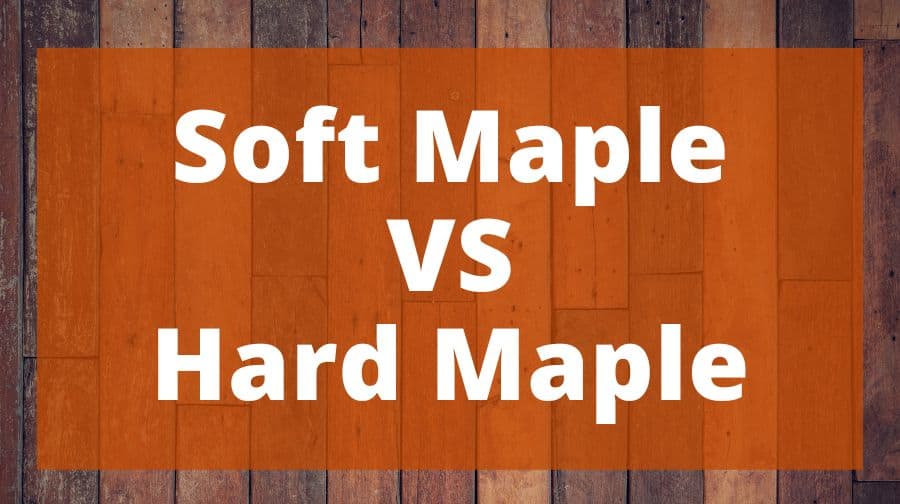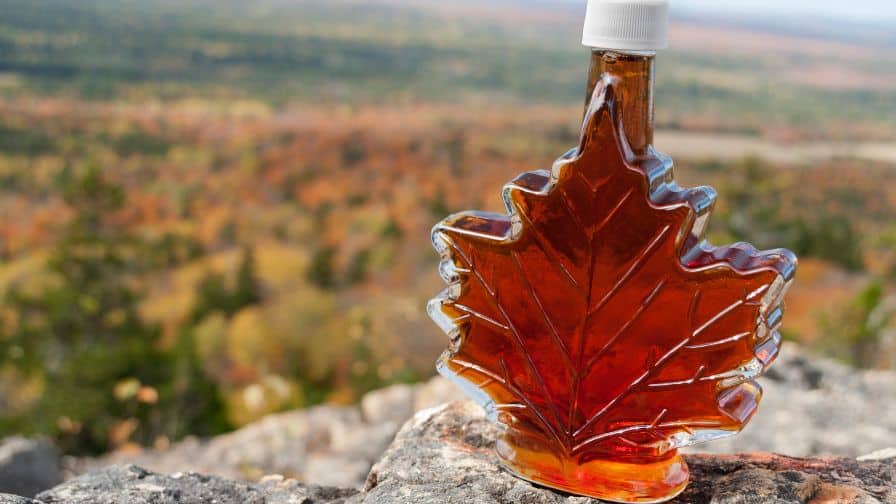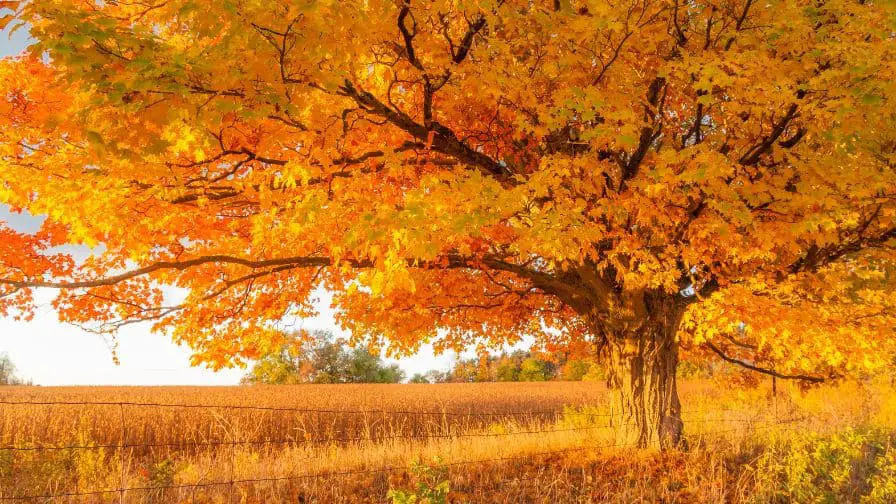
When it comes to choosing between soft maple vs hard maple, there are a few things you need to know to make the best decision for your needs. Both types of maple have their unique benefits and drawbacks, so it’s important to understand what each has to offer before making a choice.
In this article, we will explore the difference between soft maple vs hard maple so that you can make an informed decision for your next project.
What Is The Difference Between Hard Maple And Soft Maple?
Whether you’re a woodworker, a homeowner, or just someone who appreciates the beauty of wood, you’ve probably wondered about the difference between hard maple and soft maple.
Here’s a quick rundown of the key differences between these two types of Maple wood.
Hard Maple is denser than Soft Maple. This means that it’s harder to work with and more difficult to sand and finish. However, the extra effort is worth it because hard Maple is more durable as compared to Soft Maple.
The grain patterns of hard Maple and Soft Maple are also different. Hard Maple has a tighter grain pattern while Soft Maple has a looser grain pattern. This can be seen more clearly when looking at the end grain of each type of wood.
Hard Maple is also a bit lighter in color than Soft Maple. The colors can range from light brown to brown. Soft Maple has a darker color with streaks of red, brown, or gray.
Hard Maple is also less likely to warp or cup. This makes it an ideal choice for furniture and other woodworking projects that require a high degree of precision.
Soft maple takes stains and finishes well. It’s also less expensive than hard maple.
So, there you have it! If you need more durable wood, then Hard Maple is a good choice. But if you’re looking for a cheaper alternative, then Soft Maple might be a better option.
Subscribe to Brainy.Garden on YouTube
What Is Soft Maple Good For?
- Furniture: This is because soft maple is much easier to carve and manipulate into different shapes. It’s also a very strong wood, so it’s ideal for furniture that will see a lot of use.
- Cabinet making and joinery: Its stability makes it perfect to use in cabinet making and joinery.
- Doors: Its resistance to warping and splitting makes it a good choice for doors.
- Kitchen cabinets: Its affordability and durability make it a good choice for kitchen cabinets.
As you can see, soft maple has a lot of practical uses. If you’re looking for a wood that is strong and versatile, then soft maple is a good choice.
What Is Hard Maple Good For?
- Flooring: Because of its hardness, durability, and beauty, that makes hard Maple a popular choice for flooring.
- Veneer: Thin slices of hard maple are often used as veneers on furniture and cabinets.
- Paper: Hard maple is sometimes used to make paper because of its smoothness and ability to hold ink well.
- Musical Instruments: Hard maple is a popular choice for making musical instruments such as guitars and drums because of its hardness and beauty.
- Cutting Boards: Hard maple cutting boards are prized for their durability and beauty.
- Butcher Blocks: Butcher blocks made from hard maple are prized for their durability and beauty.
As you can see, hard Maple is a versatile wood that can be used for many different things. If you’re looking for durable, beautiful, and hardwood, then hard Maple is a good choice.
How To Tell Them Apart?
Now that we know a little more about the two types of maple, let’s talk about how to tell them apart. The most obvious difference is the color of the wood. Hard maple will usually be a light cream or white color, while soft maple has a bit more of a brownish tint to it.
Another way to tell the two types of maple apart is by looking at the grain. Hard maple will have a straight, more uniform grain pattern, while soft maple will have a looser, more random grain pattern.
Finally, you can usually tell the difference between hard and soft maple by the weight of the wood. Hard maple is typically much heavier than soft maple and also much harder.
Subscribe to DIY with Dave on YouTube
Soft Maple Vs Hard Maple For Furniture
Both Soft Maple and Hard Maple are popular choices for furniture making. However, there are some important differences between the two types of wood that you should be aware of before making your final decision.
Soft maple is typically used for lower-end furniture because it’s not as strong or durable as hard maple. It’s also not as expensive, which makes it a good choice for budget-conscious shoppers.
Hard maple is the stronger of the two types of maple, so it’s often used for high-end furniture. It’s also more expensive than soft maple, but it’s worth the investment if you want your furniture to last. Hard maple is also a popular choice for floors and countertops because of its durability.
So, which type of maple is right for you? It all depends on your needs and budget. If you’re looking for strong, durable furniture that will last a lifetime, hard maple is the way to go. But if you’re on a budget or you’re looking for furniture that can be easily customized with paint or stain, soft maple is a great option. Whichever type of maple you choose, you can be sure that your furniture will be beautiful.
Hard Maple Or Soft Maple For Syrup
The difference between hard maple and soft maple is subtle but important if you’re making syrup. Here’s a quick rundown of each type of tree.
Hard Maple (Acer Saccharum) is the king of syrup trees. It takes 40 gallons of sap to make just one gallon of syrup, but the finished product is worth the wait. The syrup is dark and rich, with a deep flavor that’s perfect for pancakes and waffles.
Soft Maple (Acer Rubrum) is a close second to hard maple when it comes to syrup production. It takes about 30 gallons of sap to make one gallon of syrup, so it’s not quite as labor-intensive as hard maple. The syrup is lighter in color and has a milder flavor than its counterpart.
So, which type of tree should you tap for syrup? If you’re looking for the richest, most flavorful syrup, go with hard maple. If you want something a little easier to produce (and less expensive), soft maple is the way to go.

Staining Hard Maple Vs Soft Maple
Hard maple is denser than soft maple, meaning that it will absorb stain less evenly. This can create a blotchy or streaky appearance if you’re not careful.
To avoid this, it’s best to use a pre-stain conditioner on hard maple before staining. This will help the stain to evenly penetrate the wood and give you a more consistent finish. Soft maple, on the other hand, is less dense and will absorb stain more evenly. This means that you don’t need to use a pre-stain conditioner and can apply the stain directly to the wood.
When it comes to choosing a stain for your maple wood project, it’s important to test the stain on a small area of the wood first. This will help you get an idea of how the stain will look once it’s applied to the entire piece. Once you’ve chosen a Stain, the next step is to apply it evenly. Be sure to follow the manufacturer’s instructions for the best results.
Now that you know the difference between hard and soft maple, and how to properly stain each type, you’re ready to start your next project!
Difference Between Hard Maple And Soft Maple Bark
When it comes to bark, the main difference between hard maple and soft maple is the color. Hard maple bark is typically lighter than soft maple bark. The reason for this is that hard maple trees have less sugar in their sap, which gives the bark a lighter color. Soft Maple bark can also have a smoother texture than Hard Maple bark.
Another difference between hard maple and soft maple is the leaves. Hard maple leaves are typically wider than soft maple leaves. The reason for this is that hard maple trees have more sugar in their sap, which gives the leaves a wider shape. Soft maple leaves can also have a smoother texture than Hard Maple leaves.
Soft maple leaves can also have a smoother texture than hard maple leaves.
When it comes to wood, the main difference between Hard Maple and Soft Maple is the hardness. Hard maple is one of the hardest woods, while soft maple is not as hard. The reason for this is that hard maple has a higher density, while soft maple has a lower density. Hard Maple is also more difficult to work with because it is so hard. Soft Maple is easier to work with because it is not as hard.
When it comes to taste, the main difference between Hard Maple and Soft Maple is the sweetness. Soft Maple is not as sweet as Hard Maple. The reason for this is that Hard Maple has more sugar in its sap, while Soft Maple does not have as much sugar in its sap.




